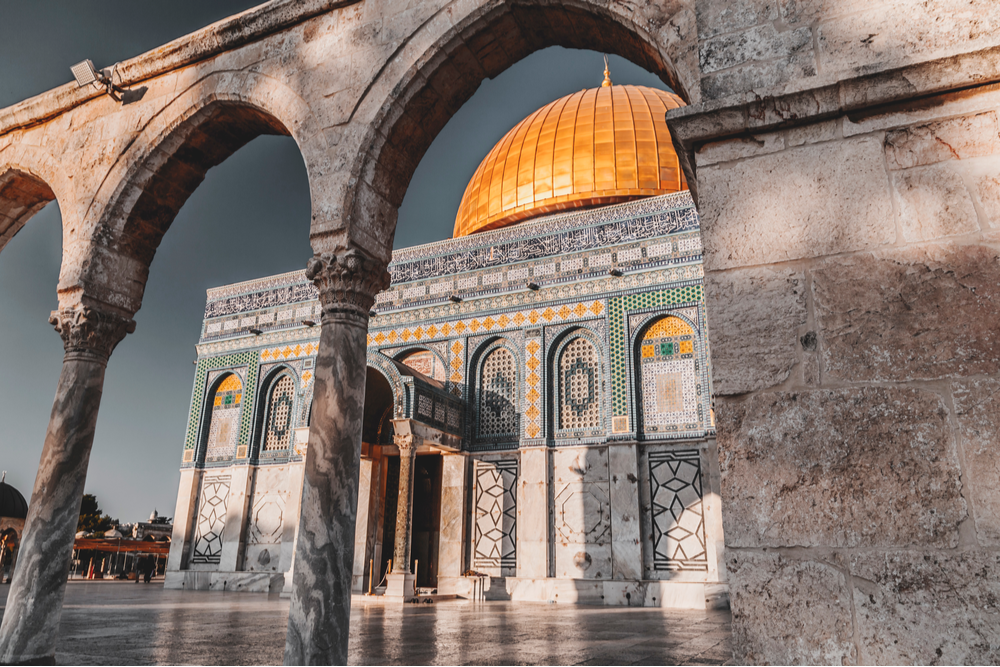Bismillah,
One of the most profound moments in early Islamic history (2 AH / 624 CE) was the change in the Qibla—the direction of prayer (salah)—from Bayt al-Maqdis (Jerusalem) to the Kaaba in Makkah.
This moment, though seemingly physical in nature, carried deep spiritual, psychological, and political significance for the growing Muslim community in Madinah.
It marked a clear distinction between the Muslim Ummah and other religious communities, and it reminded believers of their unique identity, direction, and purpose.
Historical Context
For nearly 16-17 months after the Hijrah to Madinah, the Prophet Muhammad (ﷺ) and his companions (RA) continued to pray facing Jerusalem, a direction revered by Jews and Christians alike.
However, the Prophet (ﷺ) often longed to pray facing the Kaaba, the House of Allah built by Prophet Ibrahim (AS) and Ismail (AS).
This longing wasn’t merely personal—it symbolised the deep connection between Islam and the Abrahamic legacy, as well as the desire to establish an independent identity for the Muslim Ummah.
The Divine Revelation
During a prayer, the Prophet (ﷺ) was instructed by Allah to turn his face towards the Sacred Mosque (Masjid al-Haram) in Makkah.
The Qur’anic command came in Surah Al-Baqarah:
We see the turning of thy face (for guidance to the heavens: now Shall We turn thee to a Qibla that shall please thee. Turn then Thy face in the direction of the sacred Mosque: Wherever ye are, turn your faces in that direction. The people of the Book know well that that is the truth from their Lord. Nor is Allah unmindful of what they do.
-(Qur’an 2:144)
This command not only affirmed the spiritual desires of the Prophet (ﷺ) but also became a symbol of Allah’s closeness and favor to His Messenger.
The Mosque of the Two Qiblas (Masjid al-Qiblatain)
This shift occurred while the Prophet (ﷺ) was leading the Dhuhr prayer in Masjid Banu Salamah.
Mid-prayer, he received the revelation and turned to face the new Qibla.
That mosque came to be known as Masjid al-Qiblatain (The Mosque of Two Qiblas), and it still stands in Madinah today as a living memory of this moment.
Spiritual Significance
• Divine Alignment: The Qibla is more than a geographical direction—it symbolises obedience, unity, and alignment with Allah’s command.
• Affirmation of Muslim Identity: The change marked a turning point for Muslims to distinguish themselves from earlier faith communities while still honouring their shared roots.
• Test of Faith: The shift served as a test for many—those firm in belief accepted it wholeheartedly, while others doubted or turned away.
Lessons for Today
• True Faith Means Submission: When direction changes, faith is shown not in resisting, but in surrendering to divine will.
• Unity in Direction Creates Unity in Heart: The physical act of facing the same Qibla reflects the inner unity of the Ummah.
• Change is Part of Growth: Even in our journeys, a change in direction—if guided by truth—can elevate our path.
Conclusion
The Change of Qibla wasn’t merely a shift in compass—it was a powerful moment of spiritual reorientation, identity formation, and divine confirmation.
It signaled the beginning of a new phase for the Muslim Ummah—one rooted in the legacy of Ibrahim (AS) and built upon the leadership of Prophet Muhammad (ﷺ).
Continue Your Journey Through History
Explore more timeless lessons and pivotal moments in Islamic history at UmmahInspired.com.
Let’s revive our roots, reconnect with our purpose, and walk the path of those who came before us.

Leave a Reply